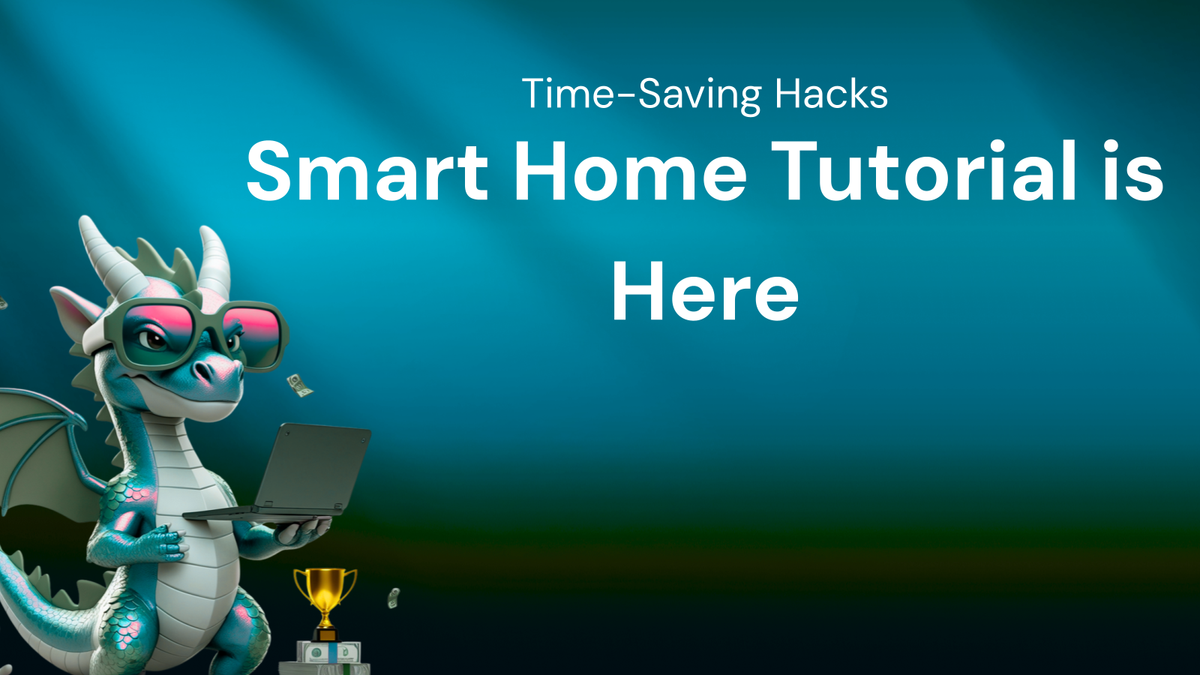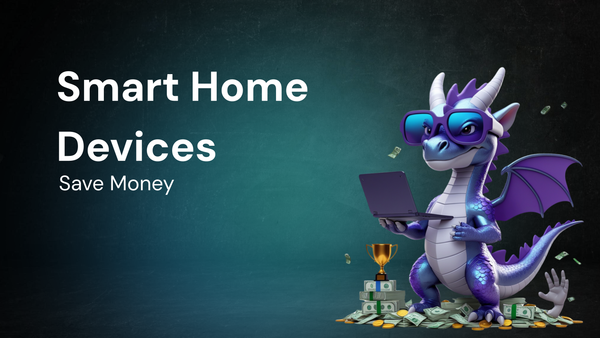Smart Home Tutorial: Time-Saving Hacks You Need to Know

Smart Home Tutorial: Time-Saving Hacks You Need to Know
In today’s fast-paced world, time is a precious commodity. We're constantly looking for ways to squeeze more out of each day, and technology offers some compelling solutions. Enter the smart home: a network of interconnected devices designed to automate tasks, streamline routines, and ultimately, give you back valuable time.
This comprehensive tutorial explores the world of smart home technology, focusing on practical, time-saving hacks that you can implement right away. We'll cover everything from setting up basic automation to integrating advanced features, all with the goal of optimizing your daily life and freeing up your schedule.
I. Understanding the Smart Home Ecosystem
Before diving into specific hacks, let's establish a foundational understanding of the smart home ecosystem. At its core, a smart home relies on the interaction of various devices, controlled and coordinated through a central hub.
A. Key Components:
- Smart Devices: These are the individual components of your smart home, ranging from smart lights and thermostats to smart locks, appliances, and security systems. They are equipped with sensors, processors, and connectivity features (usually Wi-Fi or Bluetooth) that allow them to communicate and be controlled remotely.
- Smart Hub: This is the brain of your smart home. It acts as a central control point, connecting your smart devices and allowing them to interact. Popular hubs include Amazon Echo (Alexa), Google Home (Google Assistant), Apple HomePod (Siri), and dedicated hubs like Samsung SmartThings and Hubitat.
- Mobile App: Most smart home systems offer a mobile app that allows you to control your devices remotely, set schedules, create automations, and monitor your home's status.
- Voice Assistants: Voice assistants like Alexa, Google Assistant, and Siri offer a hands-free way to control your smart home. You can use voice commands to turn on lights, adjust the thermostat, play music, and much more.
- Network Infrastructure: A reliable and robust Wi-Fi network is crucial for a smooth smart home experience. Ensure your router is up to date and positioned for optimal coverage throughout your home.
B. Popular Smart Home Categories:
- Lighting: Smart bulbs and switches allow you to control your lighting remotely, set schedules, and create custom lighting scenes.
- Thermostats: Smart thermostats learn your heating and cooling preferences and adjust the temperature automatically to save energy and maintain a comfortable environment.
- Security: Smart security systems include smart locks, security cameras, motion sensors, and alarm systems, providing enhanced security and peace of mind.
- Appliances: Smart appliances, such as refrigerators, ovens, washing machines, and dishwashers, offer features like remote monitoring, automated cycles, and energy optimization.
- Entertainment: Smart TVs, streaming devices, and smart speakers allow you to stream content, control your entertainment system with your voice, and create immersive audio experiences.
II. Time-Saving Smart Home Hacks
Now, let's explore the core of this tutorial: practical smart home hacks designed to save you time and streamline your daily routines.
A. Automating Your Morning Routine:
- Wake Up to Light: Replace your jarring alarm clock with a gradual sunrise effect. Use smart bulbs that can slowly brighten over a set period, mimicking the natural sunrise and gently waking you up. Configure a routine on your smart hub to trigger this effect at your desired wake-up time.
- Coffee Ready on Demand: Integrate a smart plug with your coffee maker. Schedule the coffee maker to start brewing just before you wake up, ensuring a fresh cup of coffee awaits you. Alternatively, use a coffee maker with built-in smart features that allow you to schedule brewing times and control it remotely.
- News and Weather Briefing: Set up a custom routine with your voice assistant to provide you with a personalized news and weather briefing as soon as you wake up. This allows you to stay informed without having to manually check your phone or turn on the TV.
- Automated Blinds: Control your window blinds with smart motorized shades. Schedule them to open automatically at sunrise, letting natural light into your home and eliminating the need to manually adjust them.
B. Streamlining Home Security and Maintenance:
- Smart Locks for Keyless Entry: Replace traditional door locks with smart locks. This eliminates the need for physical keys and allows you to unlock your doors remotely, grant access to guests, and track who enters and exits your home. You can also create temporary access codes for service providers or family members.
- Automated Security System: Integrate a smart security system with your smart home. This allows you to monitor your home remotely, receive alerts if there is any suspicious activity, and even arm or disarm your system with your voice.
- Leak Detection: Install smart water leak detectors in areas prone to leaks, such as under sinks, near washing machines, and in basements. These detectors will alert you immediately if they detect a leak, allowing you to address the issue quickly and prevent costly water damage.
- Smart Sprinkler System: Upgrade your traditional sprinkler system with a smart sprinkler controller. These controllers use weather data and soil sensors to optimize watering schedules, ensuring your lawn receives the right amount of water without wasting any.
- Robot Vacuum Cleaner: Delegate the task of floor cleaning to a robot vacuum cleaner. Schedule it to run automatically while you're away from home, ensuring your floors are always clean without requiring any effort on your part.
C. Optimizing Energy Consumption and Savings:
- Smart Thermostat for Automated Temperature Control: Smart thermostats learn your heating and cooling preferences and adjust the temperature automatically to save energy. They can also be controlled remotely, allowing you to adjust the temperature before you arrive home or turn off the heat when you're away on vacation.
- Smart Plugs for Energy Monitoring: Use smart plugs to monitor the energy consumption of your appliances and electronics. This allows you to identify energy hogs and take steps to reduce your energy consumption, such as unplugging devices when they're not in use or switching to more energy-efficient alternatives.
- Automated Lighting Schedules: Create automated lighting schedules to ensure lights are only on when they're needed. This can be done using smart bulbs or smart switches, and can be customized to suit your daily routines.
- Energy Monitoring Dashboard: Many smart home systems offer an energy monitoring dashboard that provides you with a comprehensive overview of your energy consumption. This allows you to track your energy usage over time, identify areas where you can save energy, and make informed decisions about your energy consumption habits.
D. Enhancing Entertainment and Relaxation:
- Voice-Controlled Entertainment System: Control your entertainment system with your voice. Use voice commands to turn on the TV, change channels, adjust the volume, and play music.
- Multi-Room Audio: Create a multi-room audio system with smart speakers. This allows you to stream music to different rooms in your home simultaneously, creating a seamless and immersive audio experience.
- Smart Lighting Scenes for Movie Nights: Create custom lighting scenes for movie nights. Dim the lights, turn on accent lighting, and set the mood for a perfect movie-watching experience.
- Automated Relaxation Routines: Create automated relaxation routines to help you unwind after a long day. These routines can include dimming the lights, playing relaxing music, and adjusting the thermostat to a comfortable temperature.
E. Advanced Automation and Integration:
- IFTTT Integration: IFTTT (If This Then That) is a web service that allows you to connect different apps and devices together to create custom automations. For example, you could use IFTTT to automatically turn on your lights when you arrive home, or to send you a notification when your laundry is finished.
- Custom Routines and Scenes: Most smart home systems allow you to create custom routines and scenes. Routines are a series of actions that are triggered by a single command or event. Scenes are pre-set configurations of your smart devices that can be activated with a single tap or voice command.
- Geofencing: Geofencing allows you to trigger actions based on your location. For example, you could use geofencing to automatically turn on your lights and adjust the thermostat when you arrive home, or to turn off your lights when you leave.
- API Integration: For advanced users, many smart home devices and platforms offer APIs (Application Programming Interfaces) that allow you to develop custom integrations and automations. This requires some programming knowledge, but it allows you to create truly personalized and powerful smart home experiences.
III. Choosing the Right Smart Home Devices
With countless smart home devices available, selecting the right ones for your needs can feel overwhelming. Here's a guide to help you navigate the selection process:
A. Compatibility:
- Ecosystem Compatibility: Ensure your chosen devices are compatible with your preferred smart home ecosystem (e.g., Alexa, Google Assistant, HomeKit). While some devices work across multiple platforms, focusing on a single ecosystem streamlines setup and control.
- Protocol Compatibility: Consider the communication protocols used by your devices (e.g., Wi-Fi, Bluetooth, Zigbee, Z-Wave). Some protocols offer better range or power efficiency. Hubs often support multiple protocols, but it's essential to verify compatibility.
B. Functionality:
- Identify Your Needs: Before purchasing any smart device, define your priorities. What tasks do you want to automate? What problems do you want to solve?
- Features and Benefits: Compare the features and benefits of different devices within the same category. Consider factors like ease of use, integration options, and security features.
C. Security:
- Security Features: Look for devices with robust security features, such as encryption, two-factor authentication, and regular security updates.
- Privacy Policies: Review the privacy policies of the manufacturers to understand how your data is collected, stored, and used.
D. Budget:
- Cost Considerations: Smart home devices range in price from affordable to premium. Set a budget and prioritize devices that offer the best value for your money.
- Long-Term Costs: Consider potential long-term costs, such as subscription fees, battery replacements, and maintenance expenses.
IV. Setting Up and Troubleshooting Your Smart Home
Setting up a smart home can be a straightforward process, but it's essential to follow the instructions carefully and troubleshoot any issues that may arise.
A. Setup Process:
- Read the Instructions: Before you start, carefully read the instructions for each device.
- Download the App: Download the corresponding mobile app for each device.
- Connect to Wi-Fi: Connect your devices to your Wi-Fi network.
- Pair with Your Smart Hub: Pair your devices with your smart hub.
- Configure Settings: Configure the settings for each device, such as location, time zone, and preferences.
B. Troubleshooting Tips:
- Connectivity Issues: If you're experiencing connectivity issues, check your Wi-Fi network, restart your router, and ensure your devices are within range of your Wi-Fi signal.
- Compatibility Issues: If you're experiencing compatibility issues, ensure your devices are compatible with your smart hub and that you have the latest software updates installed.
- App Issues: If you're experiencing issues with the mobile app, try restarting the app, clearing the cache, or reinstalling the app.
- Contact Support: If you're unable to resolve the issue yourself, contact the manufacturer's support team for assistance.
V. The Future of Smart Homes
The smart home is constantly evolving, with new technologies and innovations emerging all the time. Some of the trends shaping the future of smart homes include:
- Artificial Intelligence (AI): AI is being used to personalize the smart home experience, anticipate your needs, and automate tasks more intelligently.
- Internet of Things (IoT): The IoT is connecting more and more devices to the internet, creating a more interconnected and intelligent smart home ecosystem.
- 5G Connectivity: 5G connectivity is enabling faster and more reliable communication between smart home devices, leading to a more seamless and responsive experience.
- Enhanced Security: Security is becoming an increasingly important consideration for smart home users, with manufacturers developing more robust security features to protect against cyber threats.
- Sustainability: Smart homes are becoming more sustainable, with devices designed to conserve energy, reduce waste, and promote environmental responsibility.
Conclusion
Transforming your home into a smart home is an investment in time and convenience. By strategically implementing the hacks outlined in this tutorial, you can reclaim valuable hours in your day, automate tedious tasks, and enjoy a more comfortable, secure, and energy-efficient living environment. Remember to start small, focus on your priorities, and gradually expand your smart home ecosystem as your needs evolve. Embrace the power of technology to create a smarter, more efficient, and ultimately, more enjoyable home life. The possibilities are endless, and the time you save is priceless.




